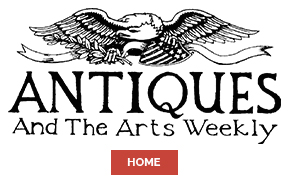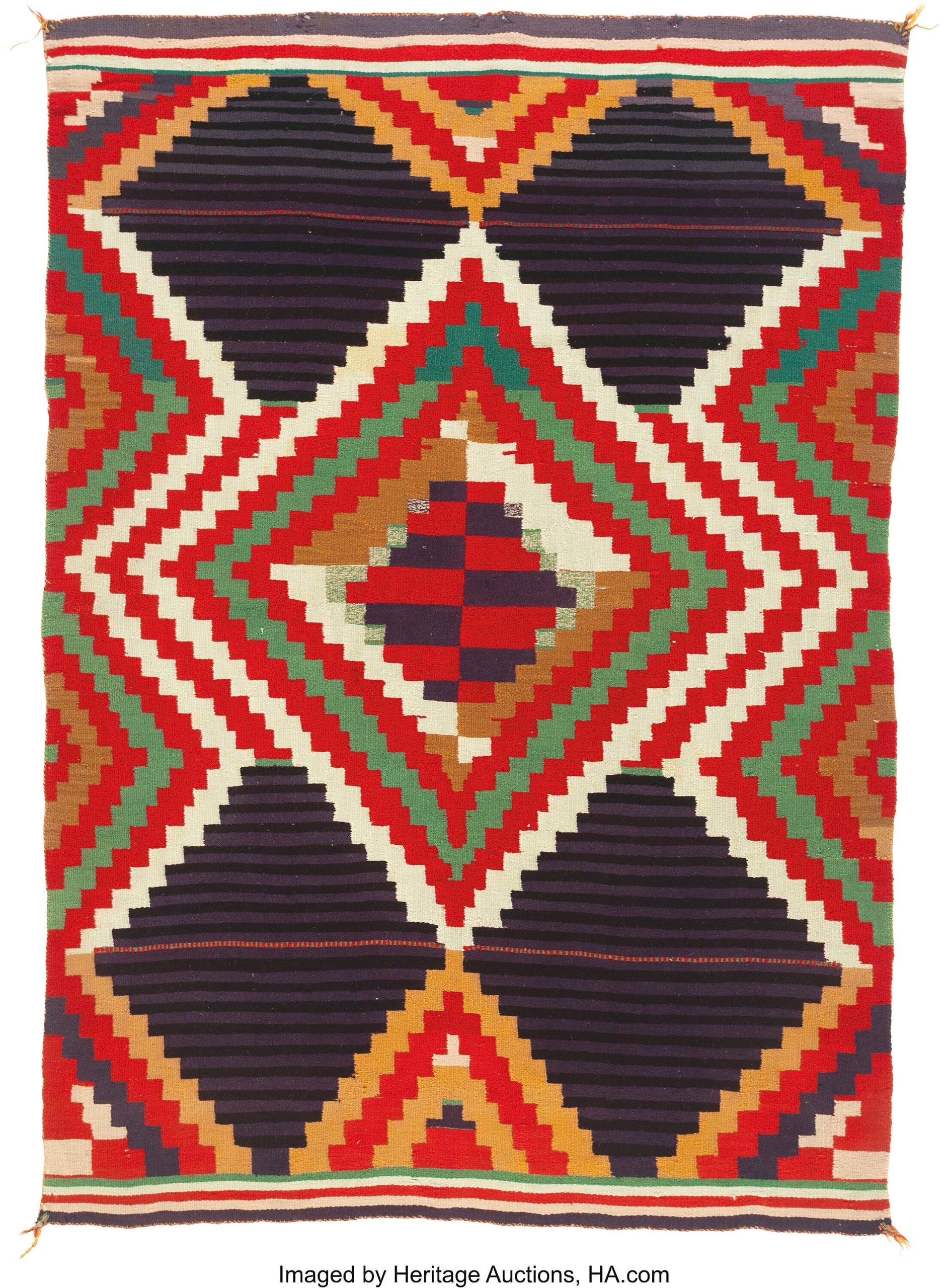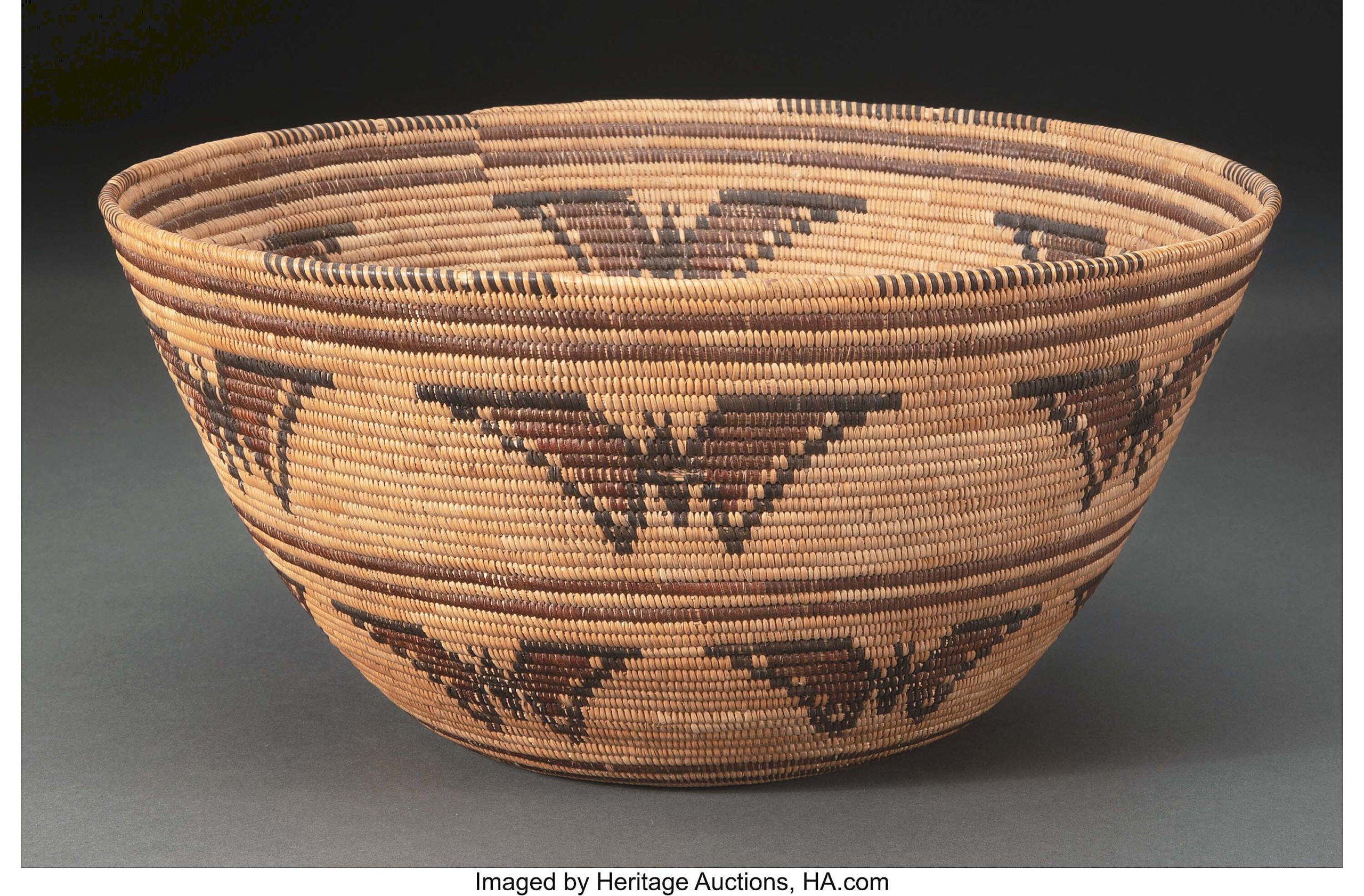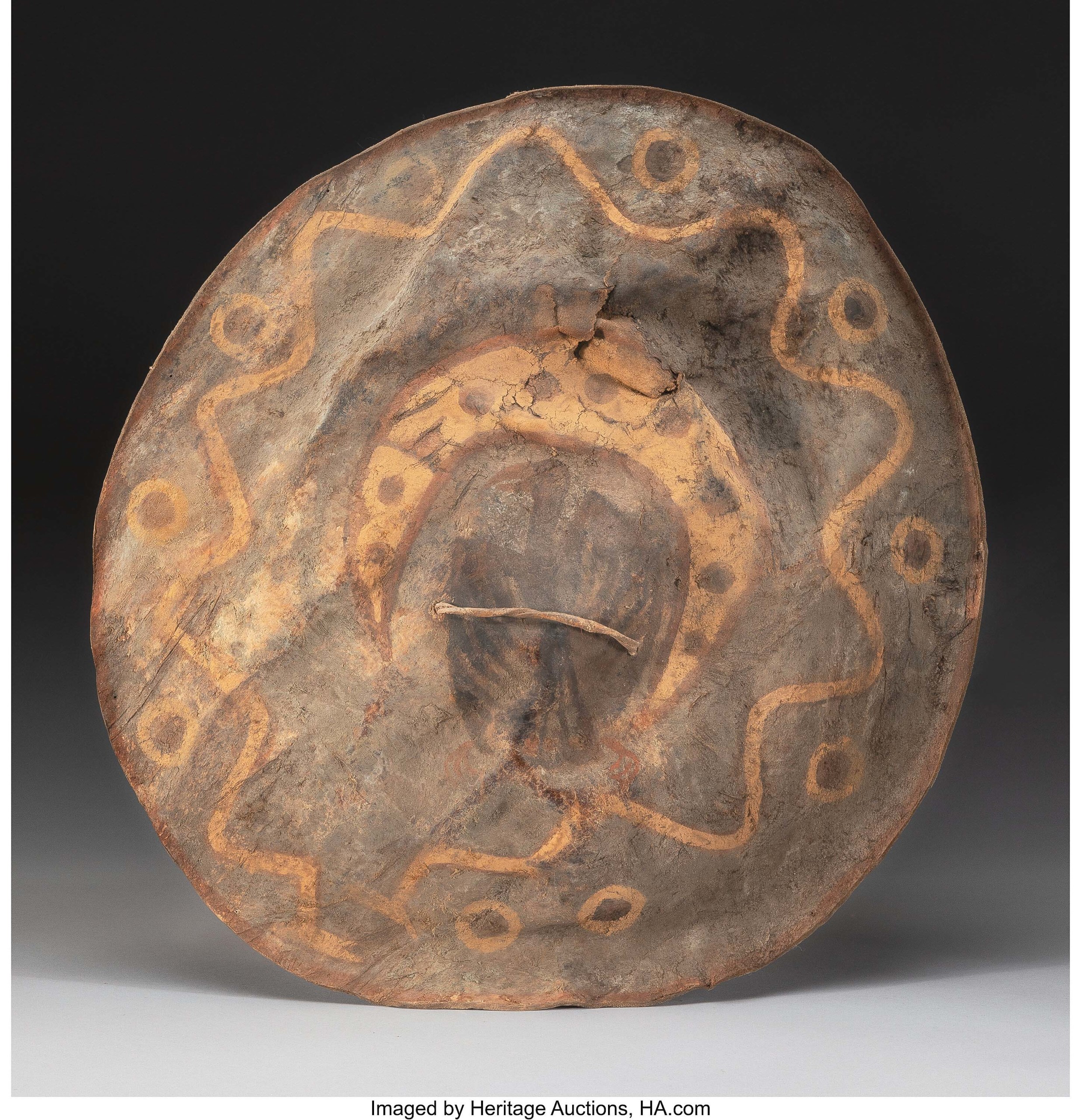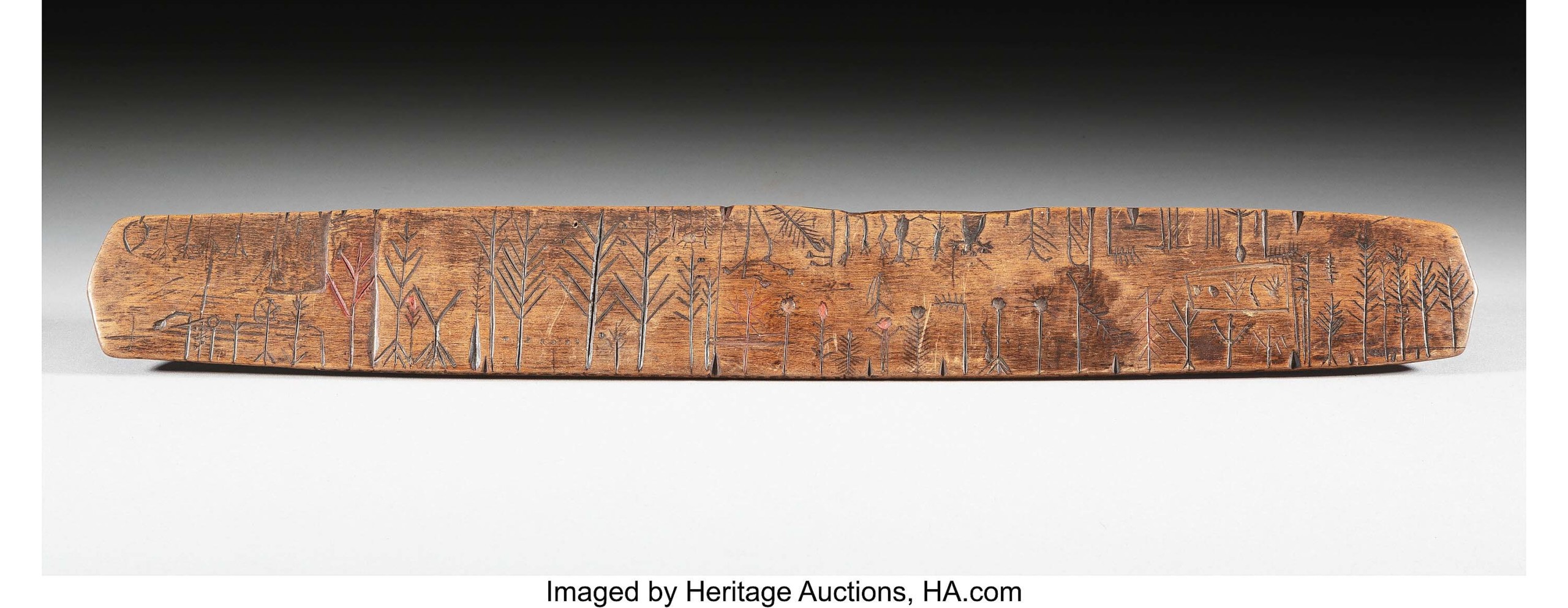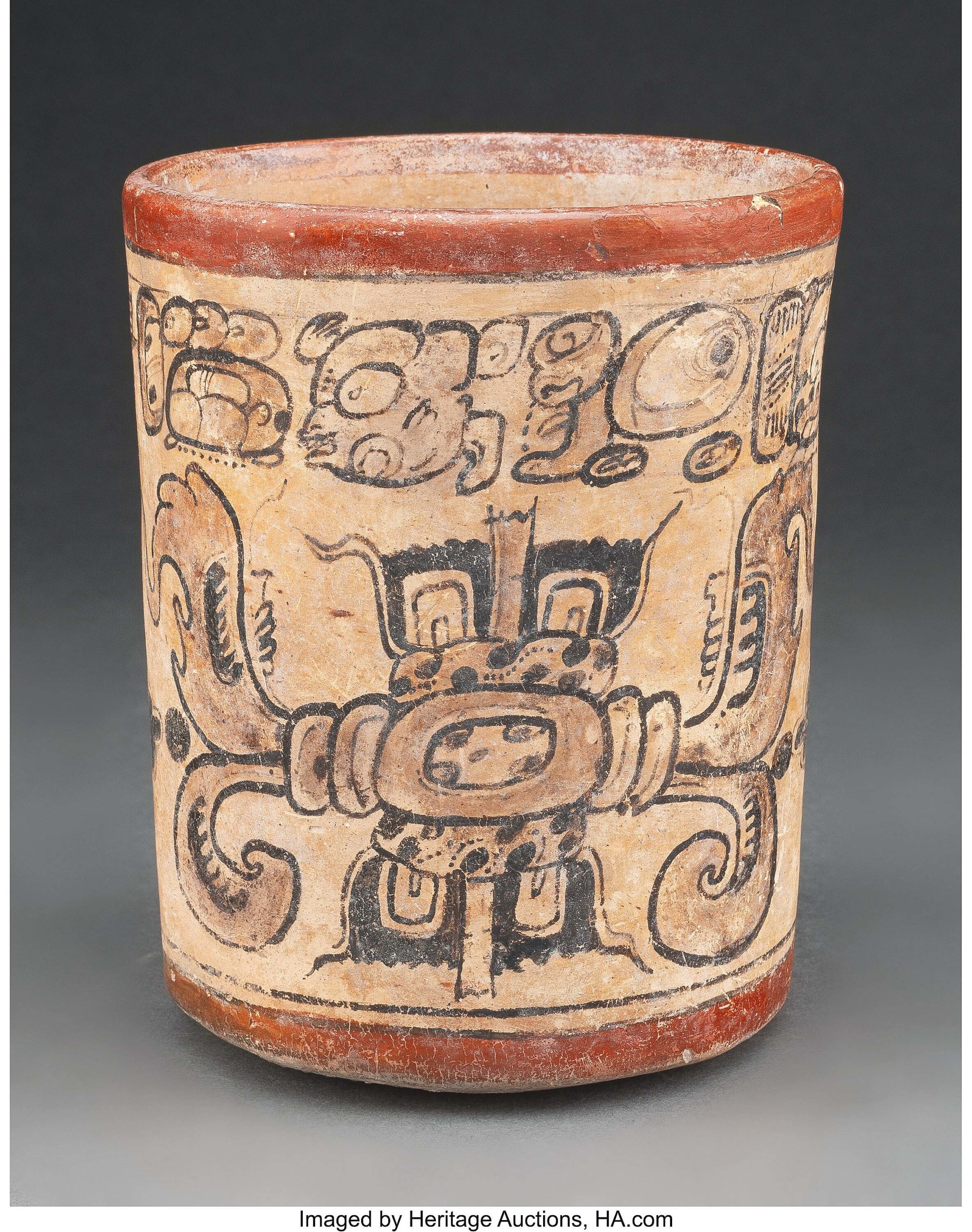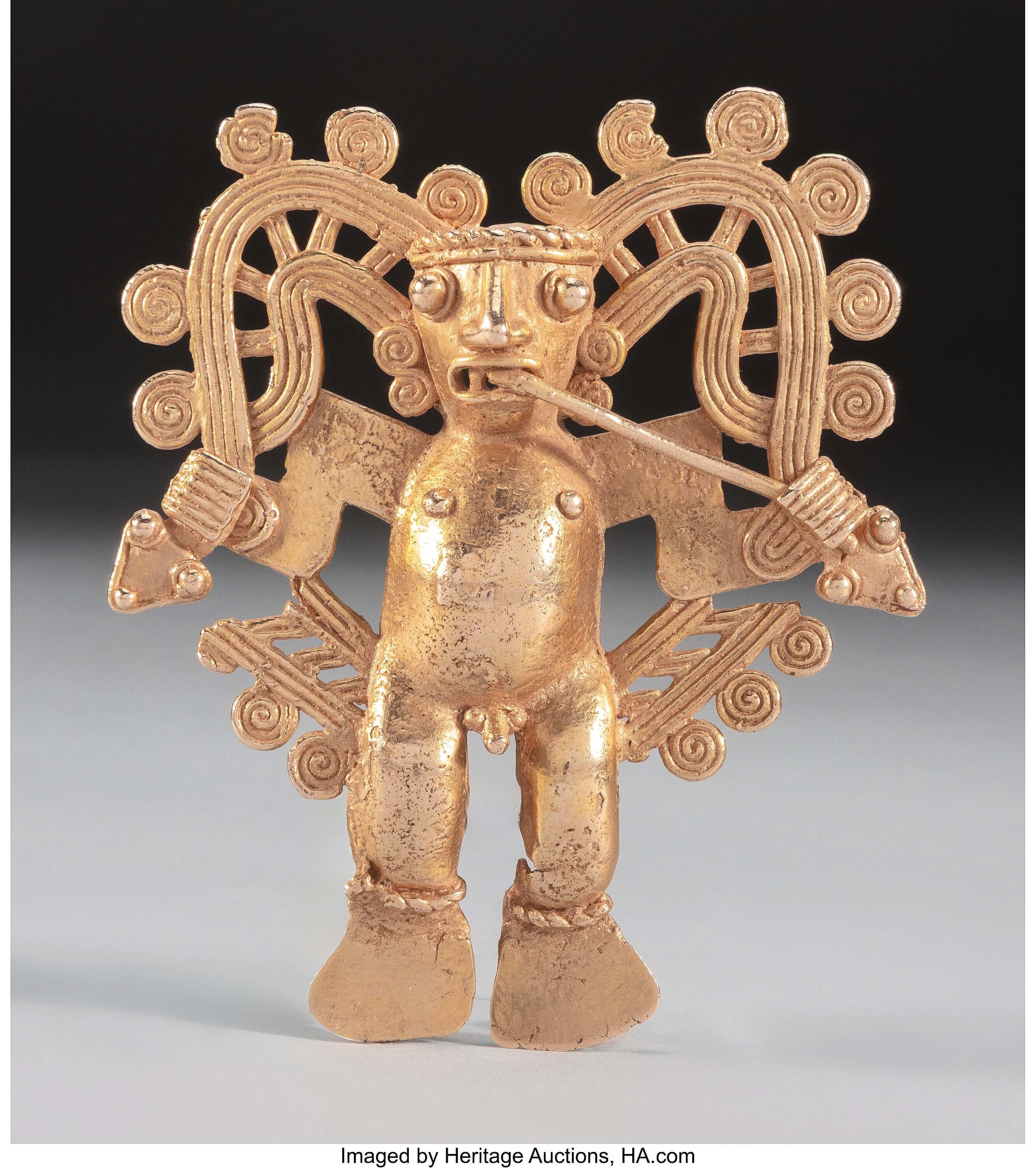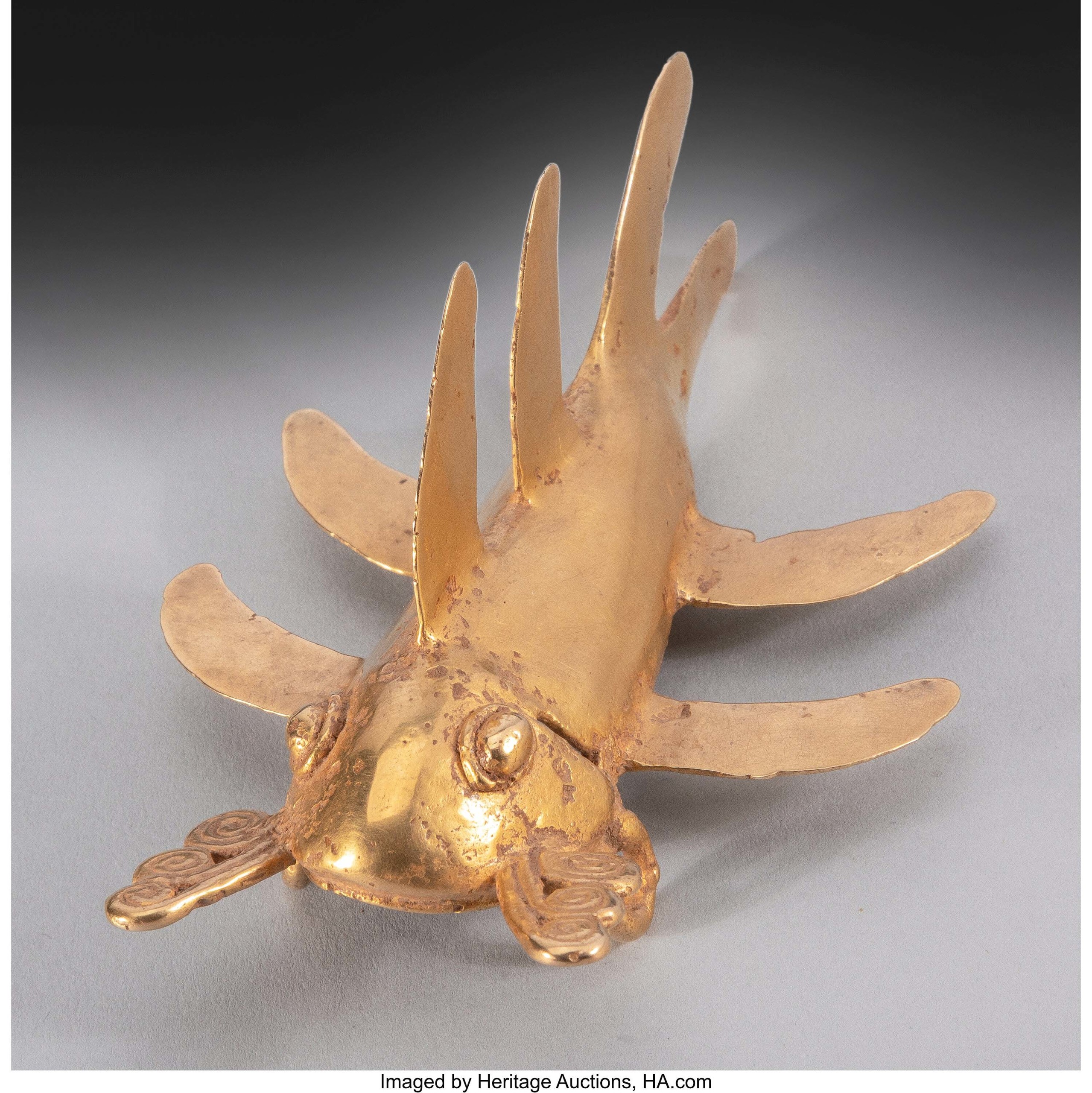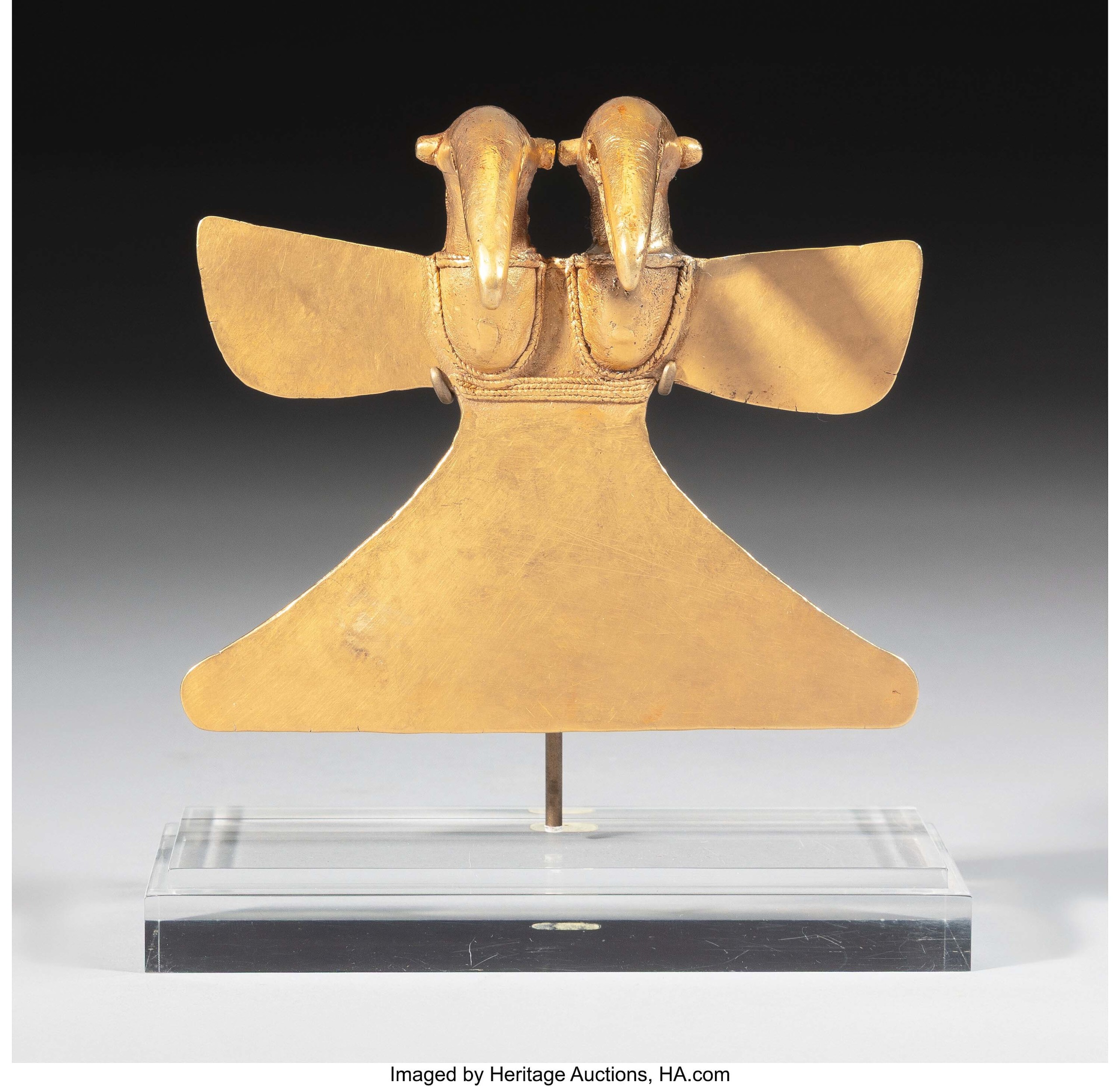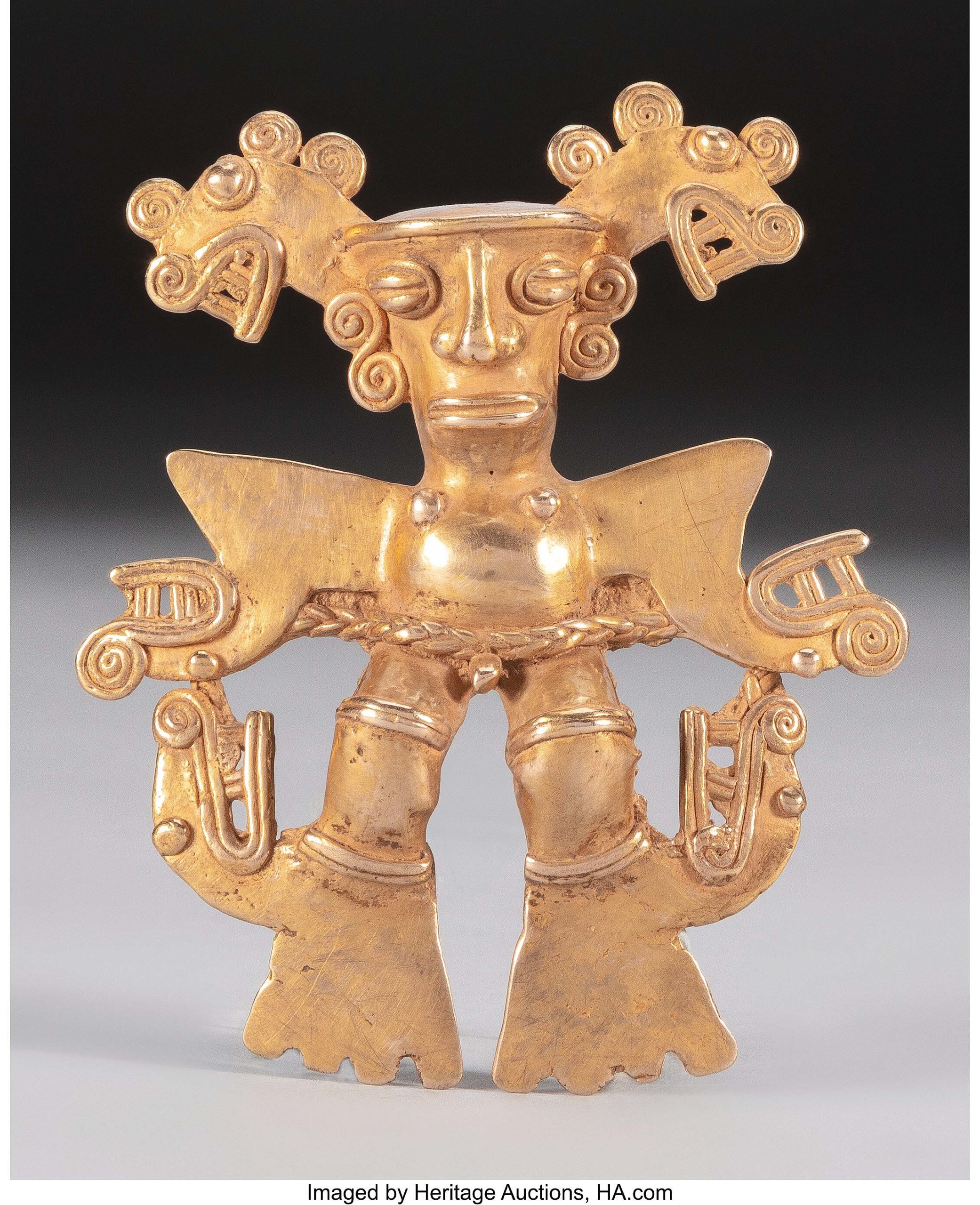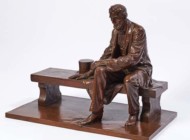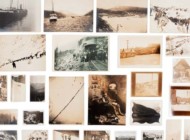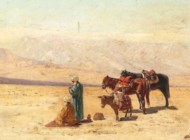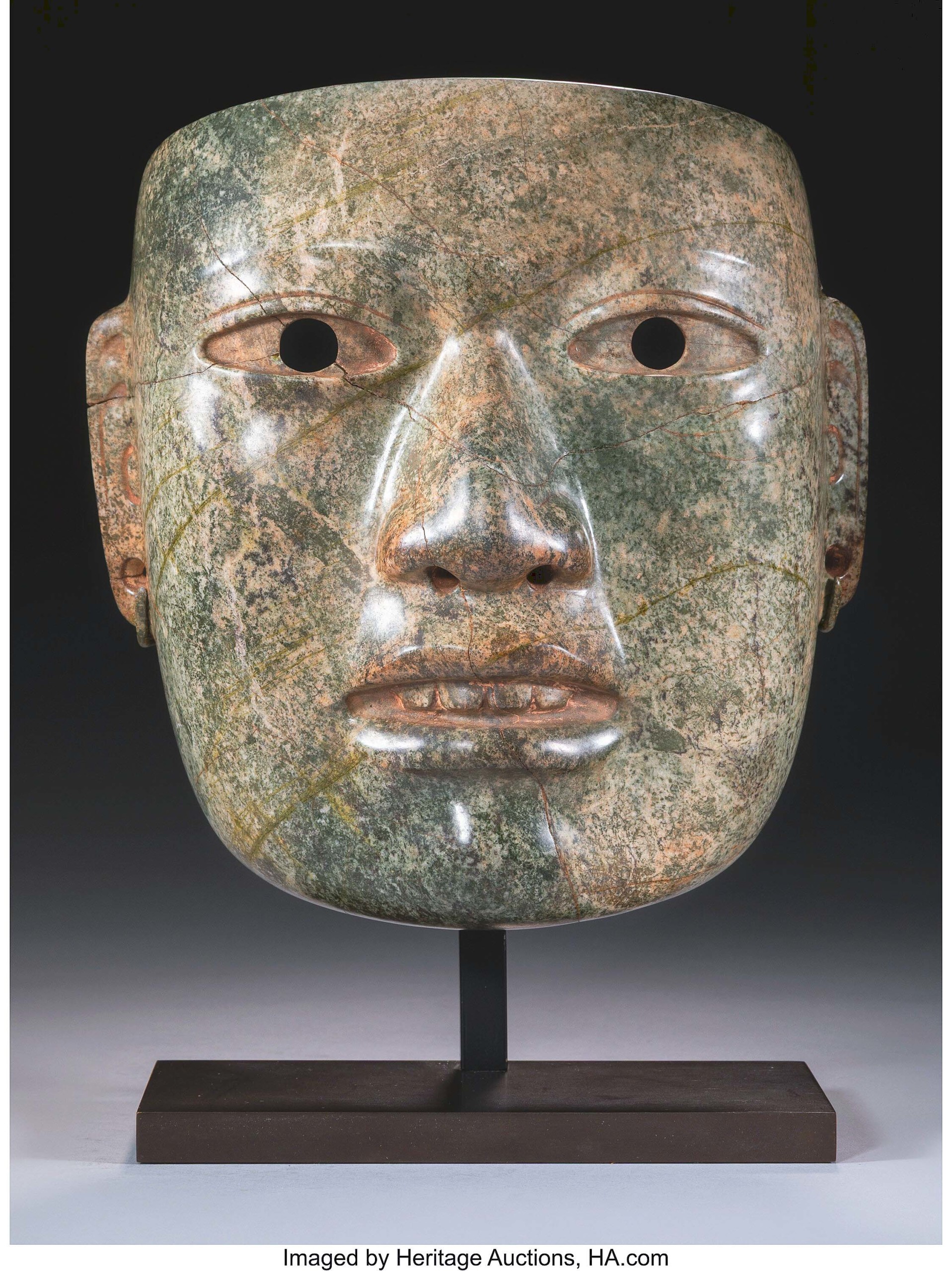
Leading the auction with a realized price of $62,500, this circa 1200-400 BCE carved jade Olmec mask once belonged to actress, Merle Oberon.
Review by Madelia Hickman Ring
DALLAS — Heritage Auctions’ first of two annual Ethnographic Art Signature auctions took place on June 13 and presented more than 500 lots, which featured works from the Americas as well as Burkina Faso and the Solomon Islands. Crossing the block in both a live and online-only session, the auction achieved a total of $978,604 with a sell through rate of 86 percent, with largely US-based buyers, according to Delia Sullivan, Heritage’s senior specialist and consignment director for Ethnographic art.
“The sale was very good, we’re very positive. Very good objects continue to sell very well. We have no shortage of buyers for Native American and we had a lot of new ones for this sale, including one who left more than $100,000 in bids in every price point and every category. Our sales in Pre-Columbian gold are very strong, following a trend over the past few years, which has attracted many consignments.”
The sale was billed as something for every collector, from “rare, museum-quality pieces with deep cultural resonance” to “accessible works for new enthusiasts” and prices reflected that mandate, ranging from $114 for a lot of three Southwest style necklaces to $62,500. Achieving top-lot honors was an Olmec carved speckled green jade mask, from Mexico’s Gulf Coast and dating to circa 1200-400 BCE, that was described as “magnificent.” The 9-inch-tall mask had, in 1956, been given to actress Merle Oberon, who lived in Mexico with her husband, Italian-born Mexican industrialist, Bruno Pagliai.
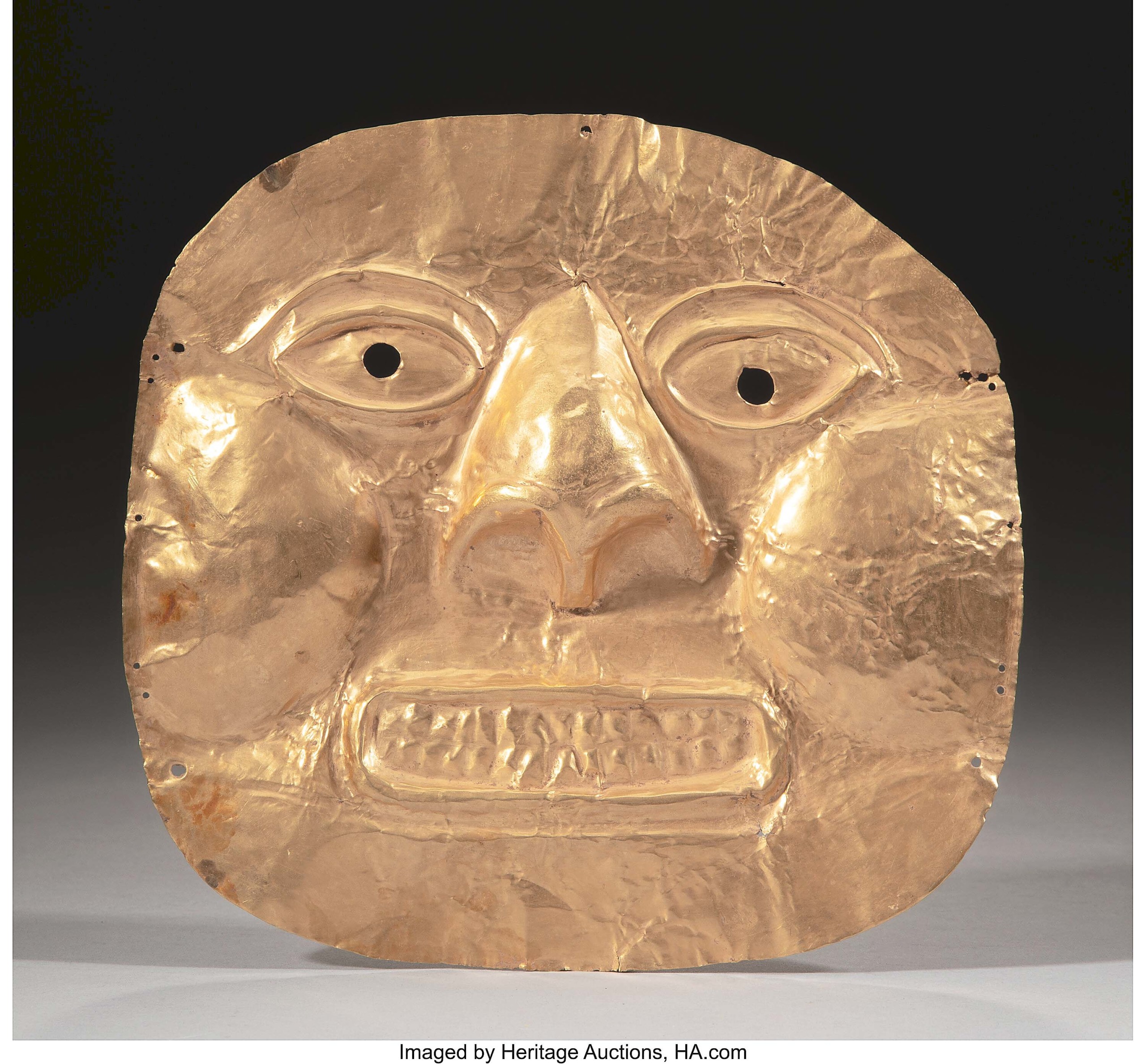
This rare Calima gold portrait mask, made in Colombia, circa 600-200 BCE, had unusually individualized features and brought $25,000.
The Ethnographic department at Heritage has seen, in recent previous auctions, strong results for Pre-Columbian gold objects, a track record that generated a 16-lot selection in this sale, many of which soared to the highest results of the day. Among these was a Calima portrait mask from Colombia, circa 600-200 BCE, was described in the catalog as having “features that are unique and individualized, with a snub nose with flared nostrils, puffy cheeks, and the mouth set in a fierce expression”; it found a new home for $25,000. It was followed on the leaderboard at $22,500 by both a 5¼-inch-tall Sinu double-headed eagle gold pectoral (Colombia, circa 500-1000 CE) and a 3½-inch-tall large Gran Cocle figural pendant (Panama, circa 1100-1500 CE). Another figural Gran Cocle pendant of similar vintage, but slightly larger at 4½ inches tall, traded hands for $20,000 while a large Veraguas gold shark pendant (Greater Chiriqui, Panama or Costa Rica, circa 700-1400 CE), related to two similar shark pendants in the collection of the Metropolitan Museum of Art, swam to $21,250. All the Pre-Columbian gold lots were cataloged with results of X-ray fluorescence (XRF) testing that identified the quality and content of the gold.
A Maya Codex-style earthenware vase, from the Mesoamerican Classic Period (600-850 CE) that was published in Justin Kerr’s The Maya Vase Database (1999) and counted two Scottsdale, Ariz., collections and one in New York among its provenance topped off at $13,750.
Indigenous North American artifacts rounded out the leaderboard, topped at $22,500 by a vibrantly colorful modern Hopi bracelet made by master jeweler, Charles Loloma. Other pieces by Loloma in the sale were a Hopi ring ($3,750) and a pair of earrings ($3,000).
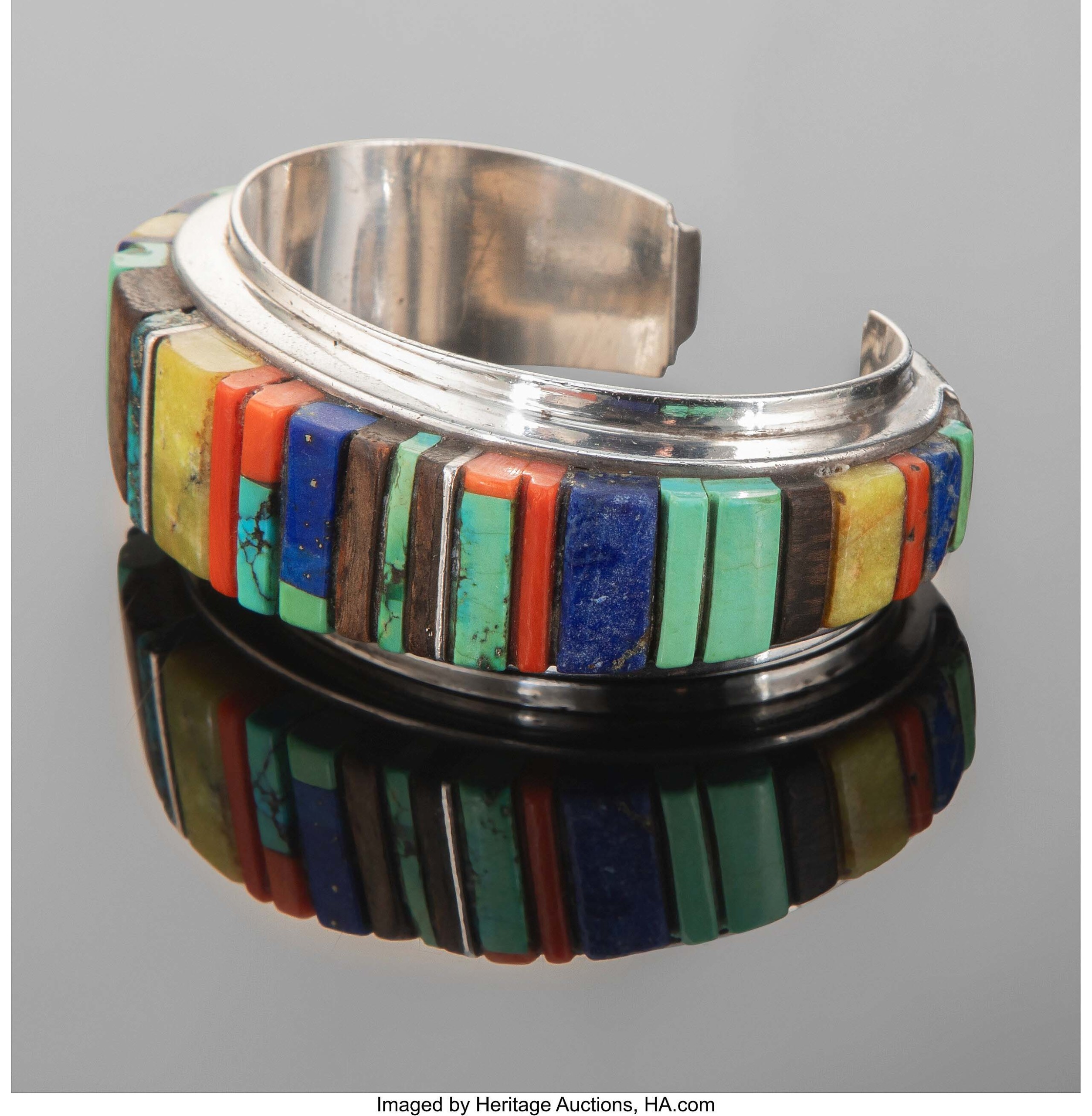
This circa 1980 silver, turquoise, coral, serpentine, lapis lazuli and ironwood bracelet by Hopi master jeweler Charles Loloma achieved a third-place finish at $22,500.
The sale featured two Yokuts coiled baskets made by Mrs Dick Francisco, who the catalog described as “an esteemed Yokuts woman of the early Twentieth Century, [who] is widely celebrated for her exceptional basketmaking skills.” Both of the baskets dated to circa 1905 and had provenance to the Wayne Thompson collection of Phoenix, Ariz., and a private New York City collection; a polychrome example with stylized bat or butterfly decoration brought $18,750, while the other, which had figural decoration, did not sell.
A Pueblo painted buffalo hide shield, made circa 1820, that was in good condition with no apparent restoration had provenance to the Chicago collection of Roy H. Robinson and had been offered at Bonhams in 2022, when it sold for $17,850, only slightly higher than the $16,250 Heritage bidders took it to.
Native American textiles continued to be a strong category, one that reached its apex at $11,875 for a Navajo Germantown Moki weaving made circa 1890 with commercial aniline-dyed Germantown wool yarn.
Sullivan said the date of her next Ethnographic sale had not yet been finalized but she expected it to be in November.
Prices quoted include the buyer’s premium as reported by the auction house. For information, 214-528-3500 or www.ha.com.
